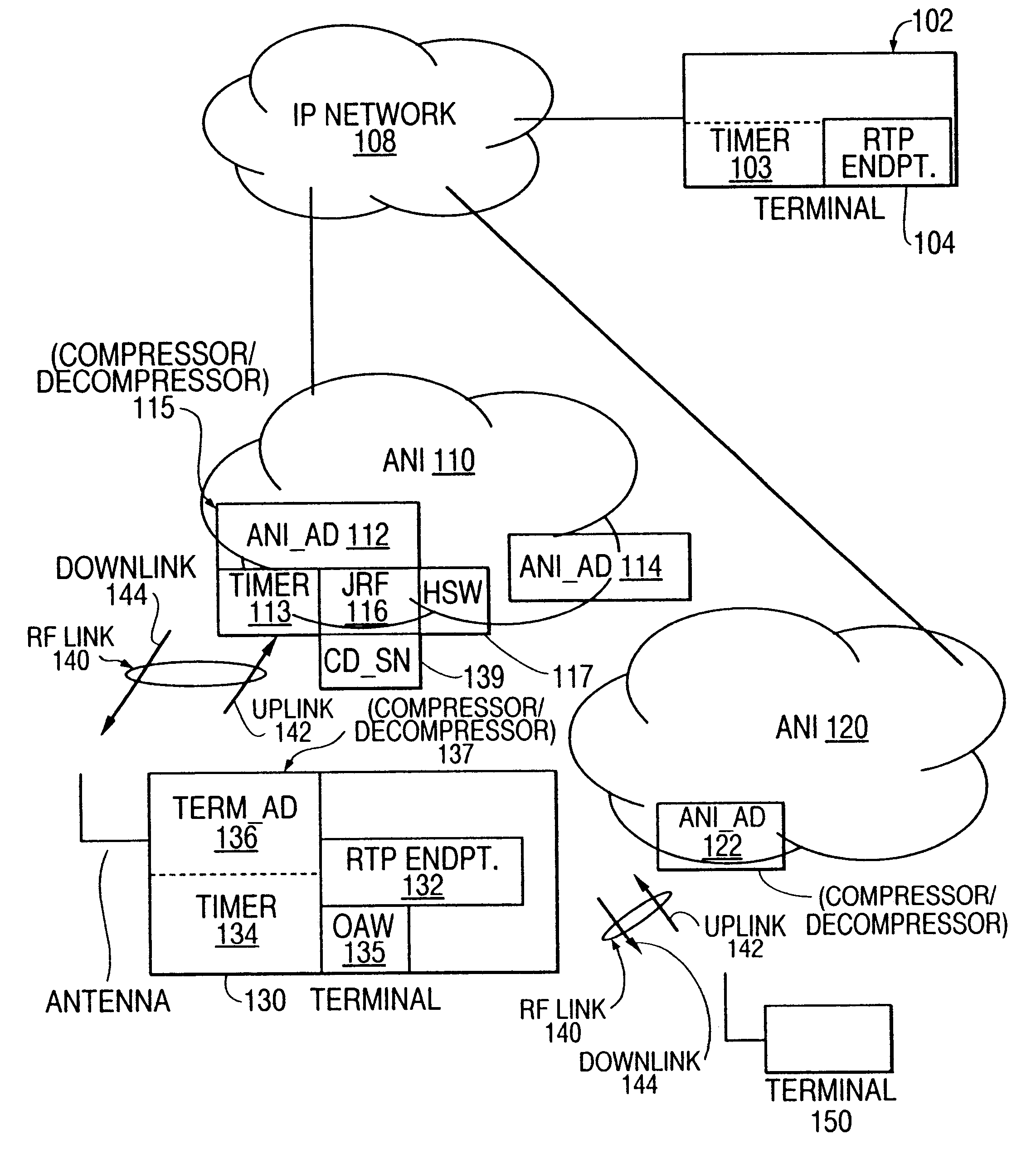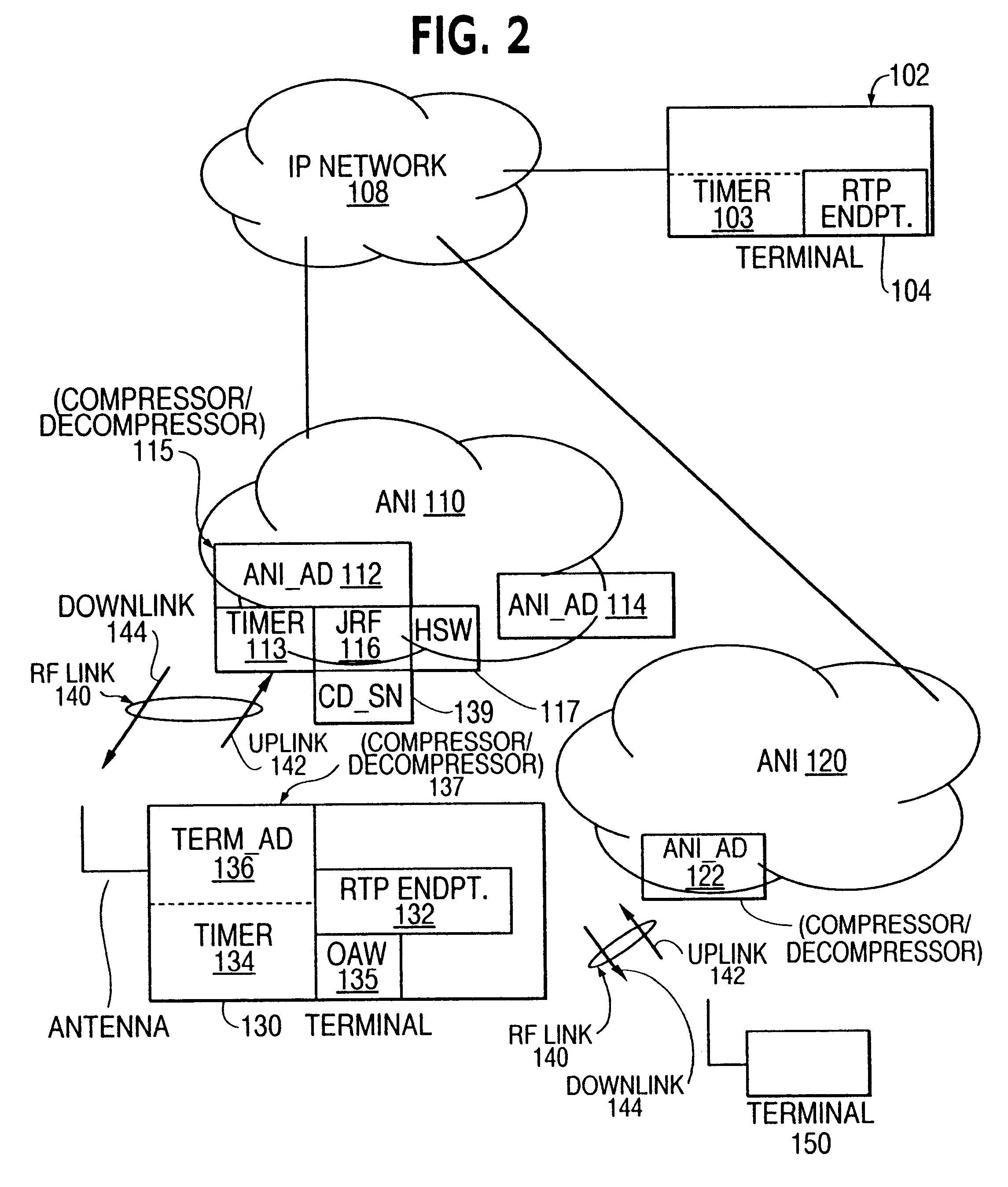Efficient handoff procedure for header compression
a header compression and handoff procedure technology, applied in the field of relocation of header compression/decompression functions, can solve the problems of consuming bandwidth over the air interface, affecting the ongoing communication, and causing the transfer of compression and decompression context information
- Summary
- Abstract
- Description
- Claims
- Application Information
AI Technical Summary
Problems solved by technology
Method used
Image
Examples
embodiment
Timer and Reference Based Embodiment
A. Overview
The timer and reference based embodiment is based on the observations that (1) RTP time stamps when generated at the RTP source are correlated with a linear function of elapsed time between packets, and (2) RTP TS are of the form TSO+index*TS_stride, where TSO and TS_stride are constants, and index is an integer (hereinafter the index will be referred to as the packed RTP TS). Therefore, in normal operation, the RTP time stamps received at the decompressor are also correlated with continually incrementing timer, with a distortion created only by the cumulative jitter between the source and the decompressor. Since the cumulative jitter includes "network" jitter (jitter between the source and the compressor) and "radio" jitter (jitter between the compressor and decompressor), the compressor can calculate an upper bound of the cumulative jitter by adding to the observed network jitter an upper bound of the radio jitter. The compressor then...
PUM
 Login to View More
Login to View More Abstract
Description
Claims
Application Information
 Login to View More
Login to View More - R&D
- Intellectual Property
- Life Sciences
- Materials
- Tech Scout
- Unparalleled Data Quality
- Higher Quality Content
- 60% Fewer Hallucinations
Browse by: Latest US Patents, China's latest patents, Technical Efficacy Thesaurus, Application Domain, Technology Topic, Popular Technical Reports.
© 2025 PatSnap. All rights reserved.Legal|Privacy policy|Modern Slavery Act Transparency Statement|Sitemap|About US| Contact US: help@patsnap.com



